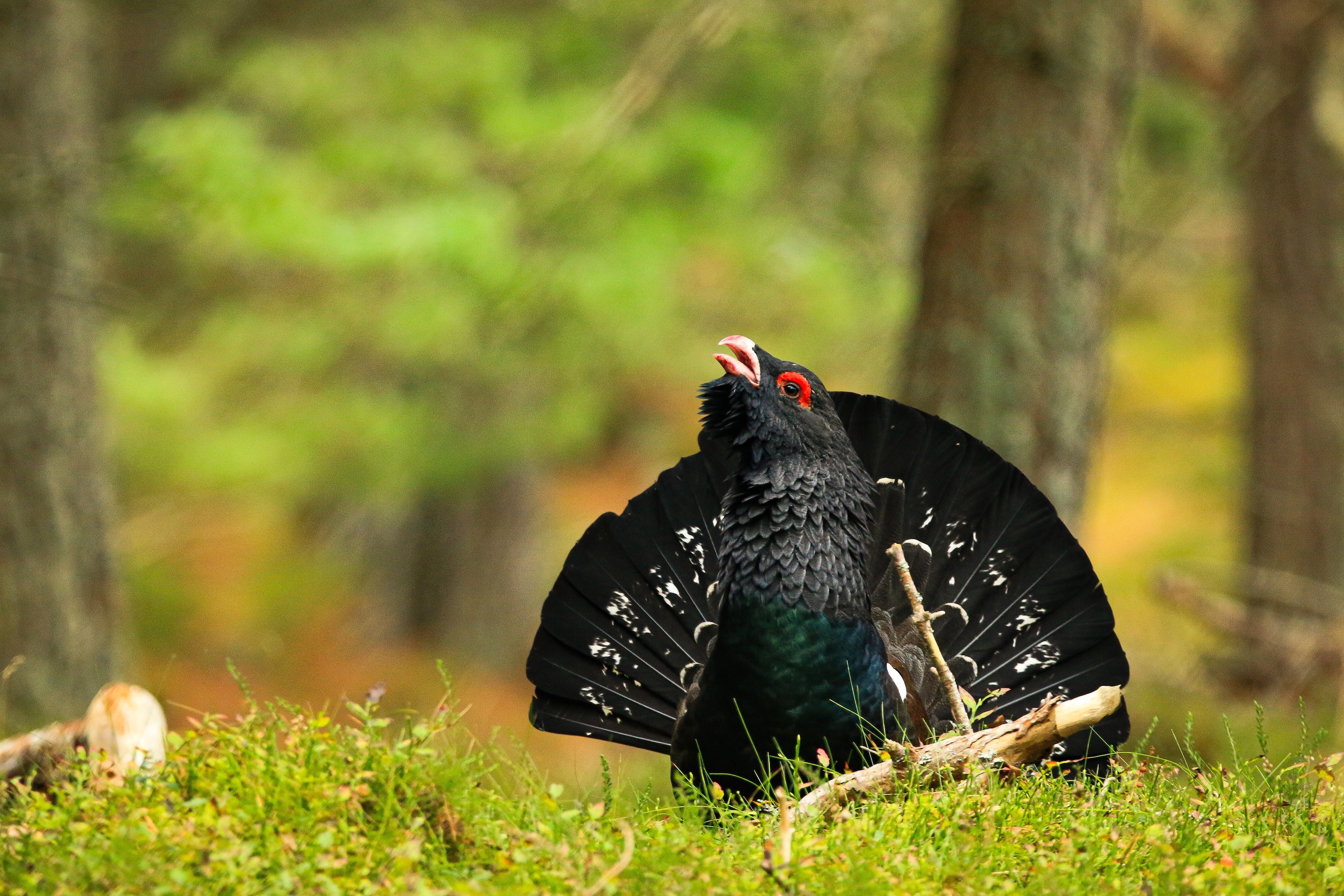Capercaillie faces extinction despite conservation efforts to reverse decline
A GWCT study showed that there were as few as 304 capercaillie left in Scotland in 2020.
New research by the Game and Wildlife Conservation Trust (GWCT) has shown that capercaillie numbers in Scotland have nearly halved in 10 years, with as few as 304 birds remaining in 2020, compared to 580 in 2010. The figures show capercaillie heading towards extinction unless further measures are put in place to save this iconic bird.
The largest grouse in the world, capercaillie was once widespread across Scotland before going extinct in the 1780s. Following reintroduction efforts in the 1830s it is now only found in old pine forests in the Scottish Highlands, primarily in the Cairngorms National Park.
Capercaillie are now red-listed and protected in the UK. In the 1970s there were around 20,000 left in Scotland but since then numbers have been declining despite efforts to help them.
When transect-based national surveys were first carried out between 1992 and 1994, they indicated there were around 2,200 birds left in Scotland. By 1999 only 1,073 were thought to remain.
During the 10-year-long GWCT study, numbers declined by 48%, with the biggest decline in the last five years of the study.
Dr David Baines, Head of Uplands Research at GWCT, said: “Declines are associated with a reduction in breeding success, which varies annually in relation to poor weather in June when chicks are growing and increased signs of predators such as pine marten in recent decades.
“This has happened despite efforts by land managers to improve habitat, and legally control foxes and crows.
“To reverse the trend and save the capercaillie from once again dying out in Scotland, we need to take urgent action and conservation measures must be stepped up, including legal predator control, reducing predation risk by pine marten and further reducing the risk of bird collisions with deer fences.”
Brood monitoring essential
GWCT scientists wanted to establish more accurate population estimates and longer-term trends by investigating whether annual counts of males at spring leks, and counts of adults and their young in August, could be combined with published survival rates.
Counts of adults and their broods in August showed that between 2010 and 2020 breeding success fell from 1.24 chicks per female to 0.05 across five forests in Badenoch & Strathspey. This was linked to a progressive decline in the number of males at leks of 2.9% per year.
This approach provided more up to date information than that from national transect-based surveys, which only took place every six years and produced relatively imprecise population estimates.
Dr Baines continued: "Given the importance of low breeding success in the current decline and the variety of changing factors that influence annual success, the Trust firmly recommends that the previously comprehensive programme of brood monitoring should be restored to provide more robust estimates of productivity."
Conservation must be focussed on the Cairngorms
Researchers visited leks - when males put on displays to attract the females - in four areas across Scotland in late April or early May when bird activity was highest. Declines were seen across the capercaillie’s Scottish range.
In Deeside & Donside and Morayshire & Ross-shire, the number of males halved between 2010 and 2019, and in Perthshire & Trossachs only one male remained by 2019. In Badenoch & Strathspey, the number of males initially increased, then decreased from 2015.
It also showed that Badenoch & Strathspey, in the Cairngorms, is now where 83% of the remaining males reside, highlighting the urgent need for conservation action in this area to prevent extinction of the species in the UK.
Deer fences cause deaths
The devasting impact that collisions with deer fences can have on capercaillie and the related black grouse is now well established. These fences, designed to keep deer out of regenerating woodlands, can both injure and kill capercaillie when they fly into them.
Trust research proved that by marking fences, bird collisions can be reduced but not prevented. Despite this knowledge, many fences dangerous to capercaillie and black grouse remain and of these many are unmarked. This new study suggests those fences are still impacting capercaillie by killing full-grown birds.
Dr Baines explained: “By 2020, the risk of capercaillie extinction in Scotland was 23% after 25 years, 95% after 50 years and 100% after 100 years.
“When we removed deaths caused by fences from our analyses, the likelihood of extinction went right down to 0% after 25 years, 3% after 50 and 40% after 100 years, highlighting that fence removal must be an immediate and high priority to help save the capercaillie.”
Ends
Note to editors:
This research was funded by the G & K Boyes Charitable Trust, which supports charitable organisations with a focus on education, training, advancement of health or saving lives, arts, culture, heritage, science, environment and conservation.
The Game & Wildlife Conservation Trust – providing research-led conservation for a thriving countryside. The GWCT is an independent wildlife conservation charity which has carried out scientific research into Britain’s game and wildlife since the 1930s. We advise farmers and landowners on improving wildlife habitats. We employ 22 post-doctoral scientists and 50 other research staff with expertise in areas such as birds, insects, mammals, farming, fish and statistics. We undertake our own research as well as projects funded by contract and grant-aid from Government and private bodies.
Press release distributed by Pressat on behalf of Game & Wildlife Conservation Trust, on Thursday 7 September, 2023. For more information subscribe and follow https://pressat.co.uk/
Capercaillie Cairngorms Grouse Deer Fencing Pine Forest Extinction Deeside Donside Morayshire Ross-Shire Badenoch Strathspey Conservation Charities & non-profits Environment & Nature Farming & Animals
You just read:
Capercaillie faces extinction despite conservation efforts to reverse decline
News from this source:


